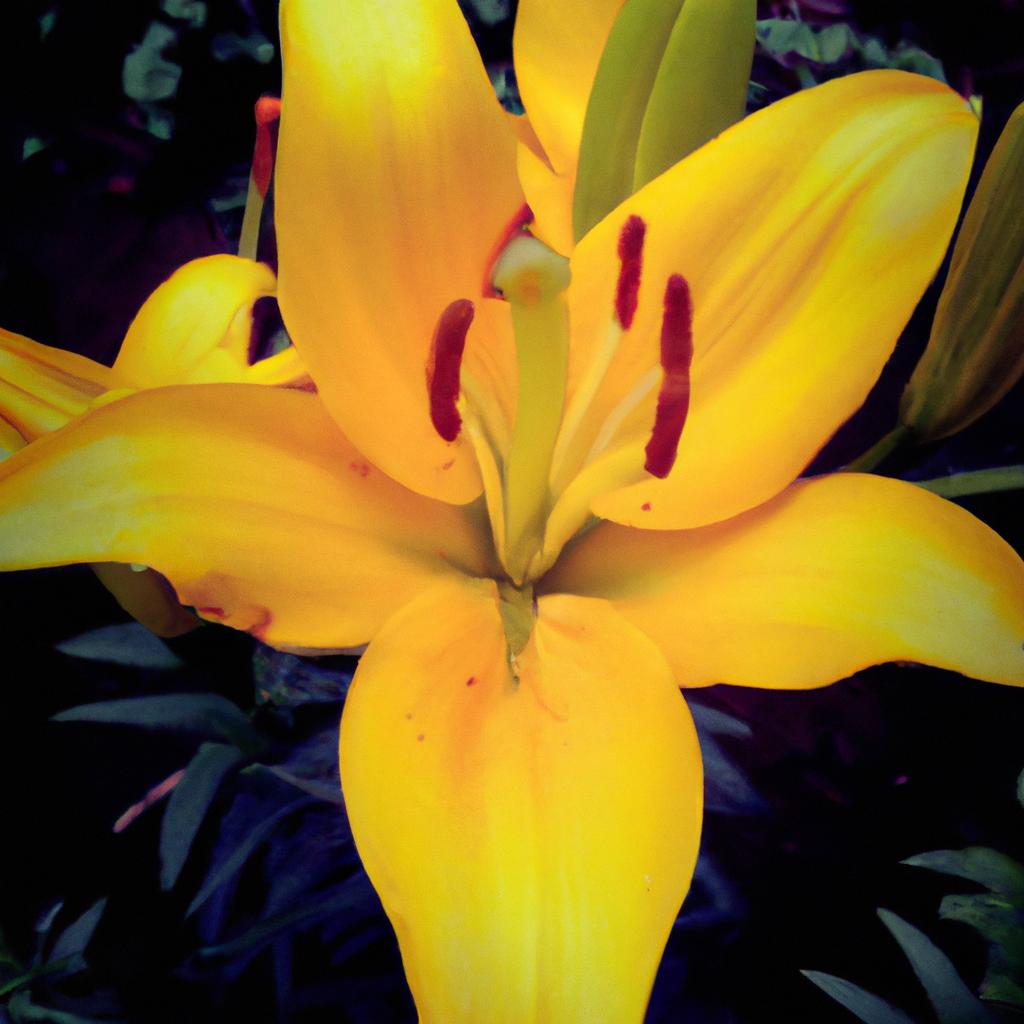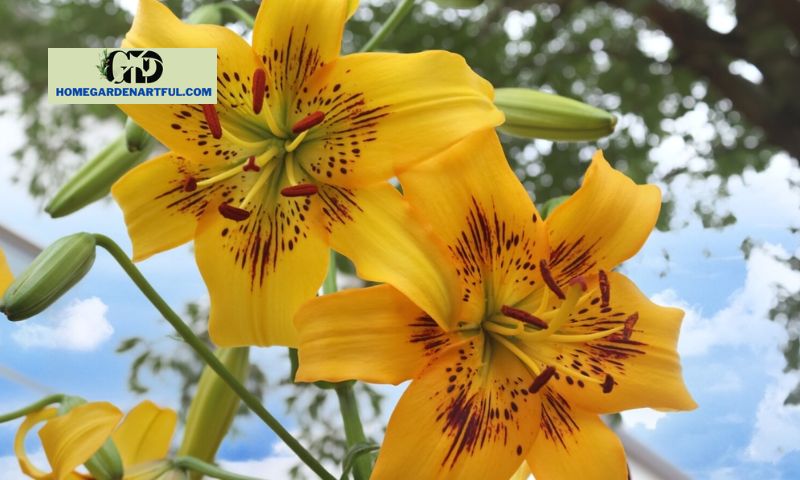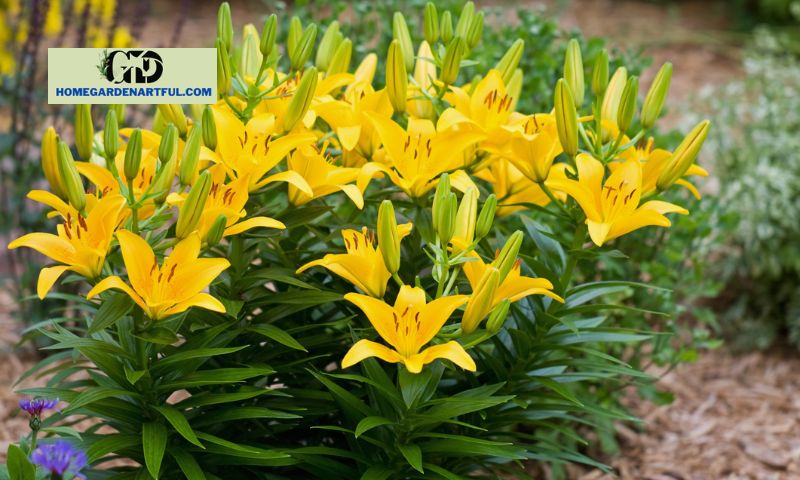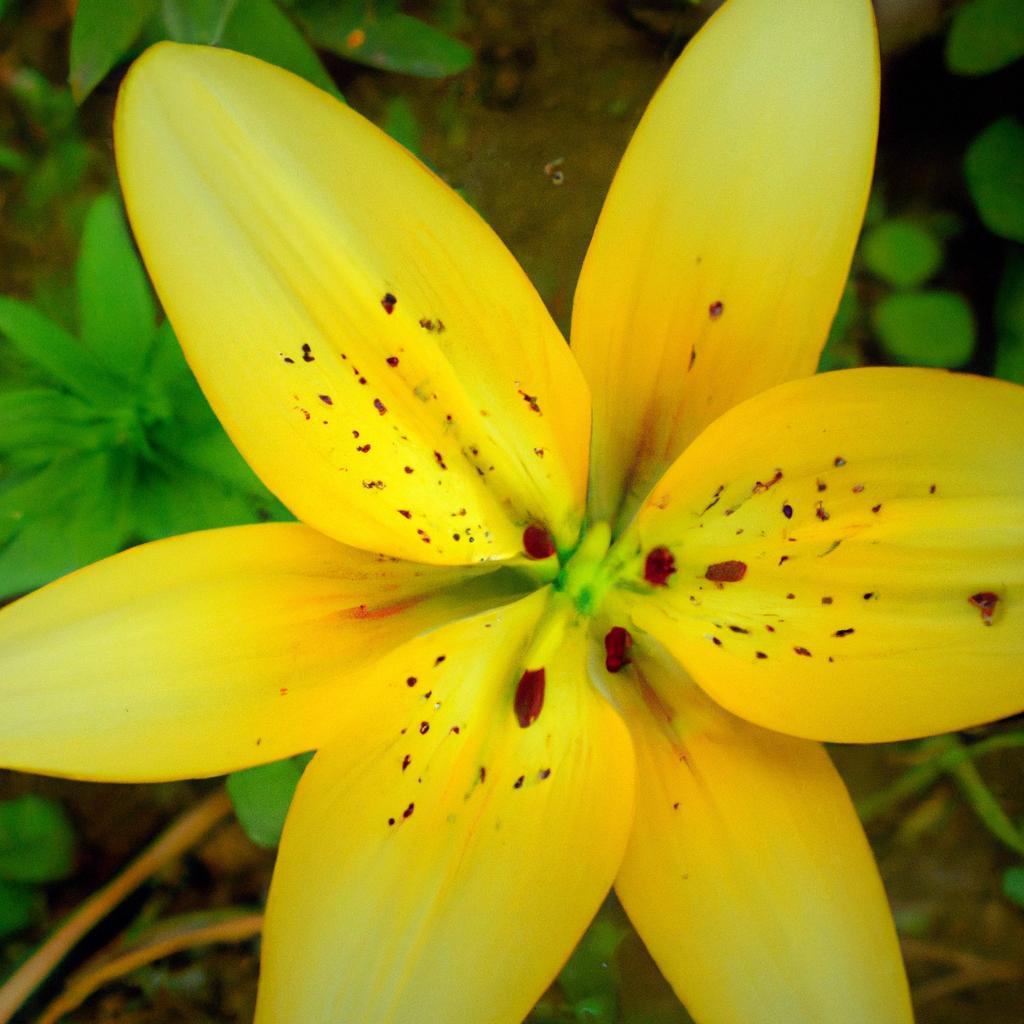Discover the mesmerizing beauty of yellow lily flowers! Explore their ornamental uses, medicinal properties, and other practical applications.
Few things rival the ethereal beauty of flowers. Their vibrant hues and delicate petals have the power to uplift our spirits and add a touch of elegance to any setting. Among the many enchanting blooms, the yellow lily flower stands out as a true gem. In this article, homegardenartful.com will delve into the world of the yellow lily flower, exploring its captivating characteristics, symbolic meanings, cultivation techniques, and much more. So, grab a cup of tea and join me on this delightful floral journey.
Why is the yellow lily flower so important and popular?
The yellow lily flower, with its mesmerizing golden hues, has captured the hearts of many flower enthusiasts and gardeners around the world. Its vibrant color and graceful shape make it a favorite choice for various occasions, ranging from weddings to festive celebrations. Moreover, the yellow lily flower holds significant cultural and historical importance in various societies, symbolizing purity, renewal, and prosperity.
As we embark on this exploration, we will unravel the secrets of the yellow lily flower’s enchantment. From its distinct characteristics to the symbolism it carries, we will uncover the allure that has made it a timeless favorite. Whether you are an avid gardener, a nature lover, or simply curious about the wonders of the natural world, this article will provide you with valuable insights into the captivating world of the yellow lily flower.
So, let’s dive into the enchanting realm of the yellow lily flower, where beauty and symbolism intertwine to create a truly remarkable floral masterpiece.
Characteristics of Yellow Lily Flower

A. Description and Appearance
The yellow lily flower is a sight to behold, captivating with its radiant and vibrant hues. Its petals boast a stunning golden color, reminiscent of the warm rays of the sun. The flower showcases a remarkable trumpet-shaped bloom, with its petals gracefully curving backward. This unique shape adds an elegant touch to any floral arrangement or garden landscape.
Beyond its striking appearance, the yellow lily flower is known for its enchanting fragrance. With a scent that ranges from subtle and delicate to intense and intoxicating, it has the power to transport you to a world of natural perfumes. Imagine being greeted by its captivating fragrance as you stroll through a garden – a truly sensory experience that leaves a lasting impression.
B. Habitat and Geographical Distribution
The yellow lily flower can be found in various parts of the world, thriving in different habitats and climates. While it flourishes in temperate regions, it can also adapt to colder environments. From lush meadows to sunny slopes, this versatile flower can be found gracing landscapes with its vibrant presence.
Geographically, the yellow lily flower can be found in regions such as North America, Europe, and Asia. Its adaptability allows it to thrive in diverse ecosystems, making it a beloved addition to gardens and natural habitats worldwide.
C. Varieties and Species of Yellow Lily Flower
Within the realm of the yellow lily flower, there exists a rich tapestry of varieties and species, each possessing its own unique charm. From the regal and majestic Asiatic lilies to the delicate and graceful Trumpet lilies, there is a yellow lily flower to suit every taste and preference.
Some notable species include Lilium canadense, Lilium philadelphicum, and Lilium pardalinum. Each species showcases distinct characteristics, ranging from the size and shape of the flower to its growth habit and blooming season. Exploring the vast array of yellow lily flower species is a delightful journey that reveals the intricacies and diversity within this captivating floral family.
Join me in the next section as we uncover the secrets to successfully cultivating and caring for the mesmerizing yellow lily flower.
Cultivation and Care for Yellow Lily Flower

Soil and Sunlight Requirements
To ensure the healthy growth and vibrant blooms of your yellow lily flower, it is essential to provide it with the right soil conditions and ample sunlight. The yellow lily thrives in well-draining soil that is rich in organic matter. A pH level between 6.0 and 7.0 is ideal for optimum growth. Prepare the soil by incorporating compost or well-rotted manure to enhance its fertility and drainage capabilities. This will promote robust root development and overall plant health.
When it comes to sunlight, the yellow lily flower prefers full sun or partial shade. Aim to provide it with at least 6-8 hours of direct sunlight daily. This will ensure that the plant receives the necessary energy for photosynthesis and encourages the production of vibrant and long-lasting blooms. However, in hotter regions, providing some afternoon shade can help prevent the flowers from fading or wilting under intense heat.
Watering and Fertilization Guidelines
Proper watering is crucial for the yellow lily flower’s well-being. Keep the soil consistently moist but not waterlogged. Water deeply, ensuring that the water reaches the root zone. During dry periods, increase the frequency of watering to prevent the soil from drying out completely. However, be cautious not to overwater, as this can lead to root rot and other water-related issues.
Fertilization is another vital aspect of yellow lily care. Apply a balanced fertilizer in early spring when new growth emerges. This will provide the necessary nutrients for healthy foliage and abundant blooms. Additionally, supplement with a phosphorus-rich fertilizer during the flowering period to promote larger and more vibrant flowers. Remember to follow the manufacturer’s instructions for proper dosage and application.
Pest and Disease Management
While the yellow lily flower is generally resistant to pests and diseases, it is important to remain vigilant and take preventive measures. Regularly inspect the plant for any signs of aphids, slugs, or snails, which can occasionally pose a threat. If detected, treat them with organic or chemical controls, depending on your preference and the severity of the infestation.
To prevent diseases such as botrytis or root rot, ensure proper air circulation around the plants by providing adequate spacing. Remove any dead or decaying foliage promptly to minimize the risk of fungal infections. Additionally, avoid overhead watering, as this can promote the spread of fungal diseases. Implementing these preventive measures will help maintain the health and vitality of your yellow lily flower, ensuring its longevity and beauty.
With the right cultivation and care, your yellow lily flower will flourish, gracing your garden with its radiant blooms. By providing optimal soil conditions, sunlight exposure, and diligent maintenance, you can enjoy the splendor of this captivating flower throughout the growing season. So, roll up your sleeves, put on your gardening gloves, and embark on a rewarding journey of nurturing and cultivating the remarkable yellow lily flower.
Symbolism and Meaning of Yellow Lily Flower

A. Cultural significance and historical references
Throughout history, flowers have held deep significance in various cultures. The yellow lily flower is no exception, as it has played a prominent role in many ancient civilizations and folklore. In ancient Egypt, the yellow lily was associated with the sun god Ra, symbolizing creation and rebirth. It was often depicted in intricate hieroglyphics and used in religious ceremonies.
Similarly, in Greek mythology, the yellow lily was believed to have sprung from the milk of the goddess Hera. It became a symbol of purity and fertility, often associated with motherhood and new beginnings. The Greeks also associated the yellow lily with the goddess Demeter, representing the harvest and abundance.
B. Symbolism and interpretations associated with yellow lily flower
The yellow lily flower carries a multitude of symbolic meanings across different cultures and contexts. Its vibrant yellow color is often associated with joy, happiness, and optimism. It represents the warmth of the sun, bringing light and positivity into our lives.
In the language of flowers, the yellow lily signifies gratitude and appreciation. It is a token of admiration and can be given to express sincere thanks or to convey feelings of friendship and loyalty. Additionally, the yellow lily is often associated with prosperity and success. It is believed to bring good fortune and abundance to those who possess it.
Furthermore, the yellow lily flower holds a deeper spiritual significance. It is associated with enlightenment and spiritual growth, symbolizing the journey toward self-discovery and inner peace. Its graceful form and radiant color evoke a sense of tranquility and harmony, inviting us to embrace the beauty of the present moment.
In conclusion, the yellow lily flower’s symbolism and meaning are deeply rooted in history, culture, and personal interpretation. Whether as a symbol of joy, gratitude, or spiritual awakening, the yellow lily continues to captivate our hearts and inspire us to embrace the beauty and positivity that surrounds us.
Conclusion
In conclusion, the yellow lily flower is a captivating and versatile beauty that holds a special place in the world of flora. Its vibrant yellow hues and graceful form make it a popular choice for ornamental purposes in gardens and landscapes. Whether adorning a flower bed or enhancing a bouquet, the yellow lily flower brings a touch of elegance and cheerfulness to any setting.
Beyond its aesthetic appeal, the yellow lily flower also possesses medicinal properties and traditional uses. Throughout history, it has been utilized in various healing practices, offering remedies for ailments and promoting overall well-being. From soothing skin conditions to aiding digestion, the yellow lily flower has been valued for its therapeutic potential.
Moreover, the yellow lily flower finds practical applications beyond its decorative and medicinal uses. Its petals can be used to create natural dyes, adding vibrant colors to fabrics and crafts. Additionally, its scent can be extracted to create perfumes and essential oils, providing a fragrant touch to personal care products.
As we wrap up this journey through the enchanting world of the yellow lily flower, let us not forget the importance of preserving and appreciating the beauty of nature. By cultivating and cherishing these magnificent blooms, we contribute to the harmonious coexistence of humans and the natural world.
So, whether you are a seasoned gardener, a lover of floral symbolism, or simply someone who appreciates the wonders of nature, the yellow lily flower invites you to embrace its vibrant charm. Explore its many uses, admire its elegance, and let it inspire you to create your own artful masterpiece in the garden.
Thank you for joining me on this delightful adventure into the realm of the yellow lily flower. Remember, at homegardenArtful.com, we celebrate the beauty of nature and strive to bring it into our lives in the most artful ways.


